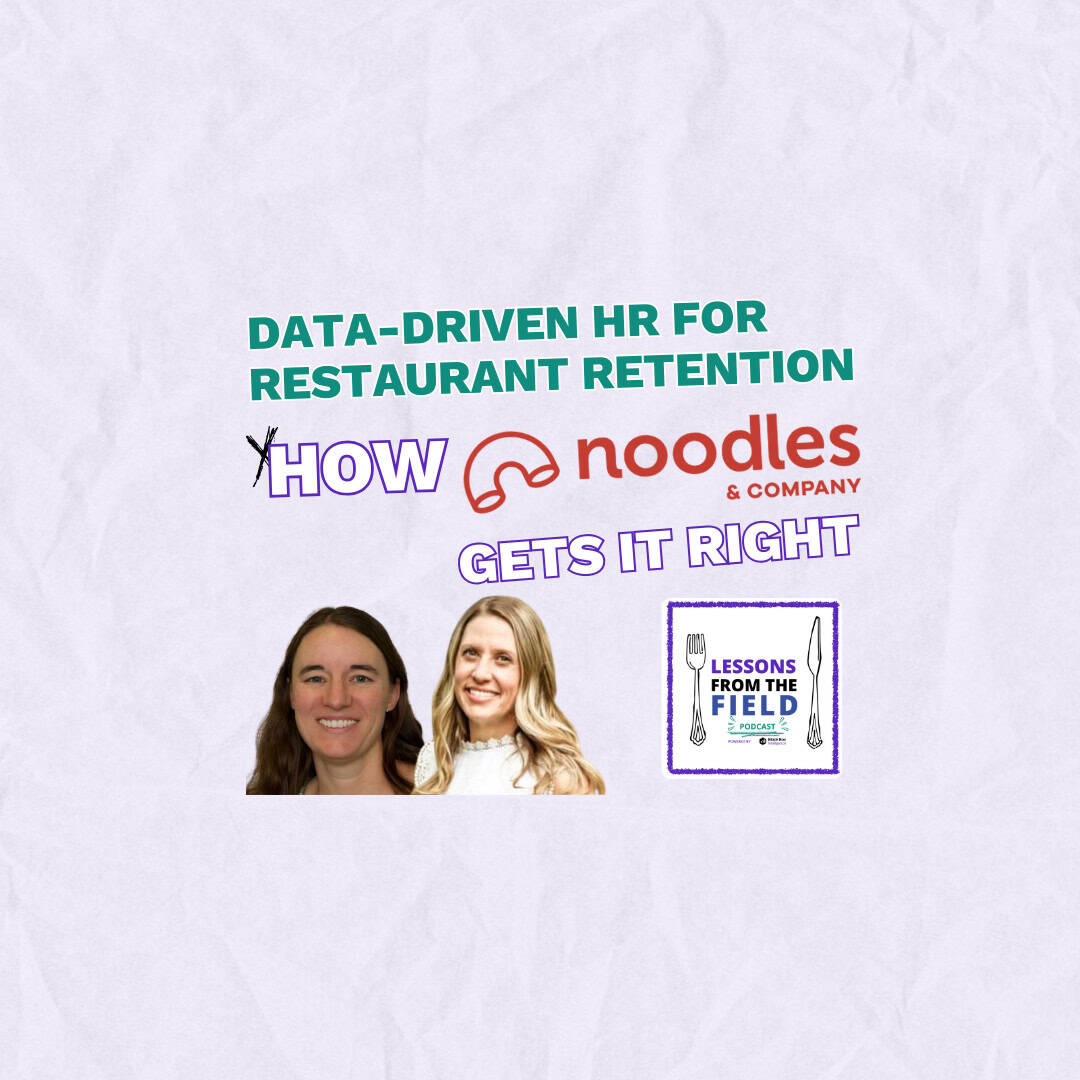 Key Takeaways
Key Takeaways
What You Need To Know:
- Utilize Data to Understand Employee Turnover
- Enhance Training Programs Through Performance Metrics
- Implementing Predictive Analytics for Staffing Needs
- Personalize Employee Engagement Initiatives
- Align Operational Goals with Employee Performance

Staffing a restaurant is hard. Keeping great people? Even harder. But what if data could help?
That’s what Noodles & Company is doing—and it’s working.
In the recent Lesson From the Field Episode, Jennilee Childs, VP of Human Resources and Darcy Dees, Director, HRIS, Compensation, Reporting and Analytics at Noodles & Company shared their secret sauce. They’re using data to understand what helps people stay and what makes them leave.
Here’s a quick look at how they leverage a Data-Driven HR to get Restaurant Retention right.
Using a Staffing Forecast Model
How many people should work in each restaurant? Noodles & Company uses a staffing forecast model to help answer that.
This model looks at:
- Sales
- Turnover (people leaving)
- How long team members stay
- Full-time vs. part-time staff
This helps managers plan ahead—and hire smarter.
Keeping an Eye on Turnover (It Costs More Than You Think)
Hiring someone new takes time and money. But losing people costs more than just replacing them.
Darcy explained that when managers stay longer than a year, everything gets better:
- Sales go up
- Guest scores improve
- Food comes out faster
- Profits rise
So keeping good people is a smart business move.
Acting on Data
Noodles & Company built a turnover dashboard to find out what really matters. They looked at:
- How fast new hires were trained
- How much overtime people worked
- If new team members finished training
- Whether general managers stayed in place
They found that if people take too long to onboard or work too much overtime, they’re more likely to leave.
Now they’re building a new version of this tool to reflect changes since COVID.
Working with Operations—Not Against Them
Noodles & Company meets with their ops leaders every two weeks. No HR policy gets rolled out without input from the restaurant team.
They know the restaurants are the revenue centers, and their job in HR is to support the people on the ground.
Example: Big Menu Changes, Big Training Wins
Changing 70% of your menu sounds scary—but Noodles & Company did it with success.
Here’s how:
- They gave restaurants extra training hours
- Managers used Workday to track training time
- The team made sure everyone was ready before launch
The result? Fewer questions, smoother service, and great feedback from restaurant staff.
Conclusion
Data-driven HR for restaurant retention isn’t just buzzwords strung together. It’s a real strategy that works—especially when people, processes, and data all work together.
Thanks to Noodles & Company, we got a look at what great HR looks like in action.